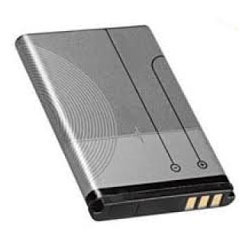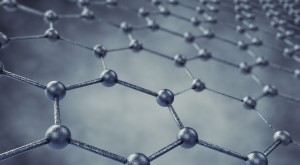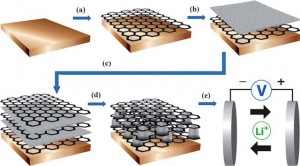24
Aug 2015
OUR FUTURE BATTERY TECHNOLOGY
New week, new spirit! Hello Monday, everyone…
Today’s topic is about the future battery technology. We know that the world today is very mobile. Everywhere, people use mobile phones, laptops and other gadgets for various purposes. When my friends went traveling to Harbin (a SUPER COLD place in northern part of China), they were really irritated by their mobile phone’s battery. Though they brought power bank, it was not enough, because the extreme cold weather devoured their battery capacity shortly. Well, can you imagine the feeling when you are running out of battery during your vacation, but on the other hand, you still need to use it to take some pictures, search direction using the Google Map, you still need the mobile data or the internet to chat with friends or family or even to post some photos to the social media, etc. At some point, we can conclude that those gadgets without batteries are nothing.
The Li-ion Batteries
Li-ion Battery
I have to admit that our gadgets are constantly getting smaller and more powerful (I’m a fan of GoPro!), the development of commercial batteries that are small enough and have sufficient capacity to feed their power demands hasn’t been in accordance.
The current batteries that we are using inside our gadgets are the Lithium-ion (Li-ion) batteries. They’re in almost all mobile electronic devices – from your mobile phone and laptop, through to back-up power supplies on jets and spacecrafts. Surprisingly though, despite this huge demand, the fundamental design of Li-ion batteries has remained broadly similar in recent years.
Battery life is frequently the limitation in many existing and experimental applications. It’s key for the future of technologies such as electric vehicles, and for high-capacity energy storage for renewables such as wind and solar power. In fact the comparatively slow progress with developing new batteries has resulted in many electronics manufacturers turning to trying to reduce or maintain their products’ power requirements to find a balance.
What is the Solution, Then?
The past few decades have seen an explosion of research in this area and finally, the scientists found the way to improve Li-ion batteries. The new “wonder material” graphene has also been suggested as a possible key to the solution. Graphene has a number of interesting properties that have led researchers to suggest either modifying components of Li-ion batteries, or using graphene as the energy-storage medium instead as promising solutions.
Graphene has also been used to develop electronic devices with an extreme low power requirement. This is possible because pure graphene has the lowest resistivity of any known material at room temperature – devices made of pure graphene can conduct electricity more efficiently than any other material (at room temperature). As a consequence, very little energy is wasted.
The Graphene Compound
Devices built with graphene wouldn’t experience the same problems of heating faced by current electronics – they could run indefinitely with very little increase in temperature. Heat is bad for electronics; it means energy is being wasted and it often serves to reduce the efficiency of the device further as it heats up. Pure graphene virtually eliminates energy losses of this kind, which makes devices produced from it extremely energy-efficient. For consumer electronics, this could mean significantly more powerful devices with massively improved battery life – a win-win scenario if ever there was one.
What’s more, studies indicate that using graphene to replace or enhance components of Li-ion batteries can significantly improve the energy density and longevity of the battery. One popular technique has been to make the anodes or cathodes in Li-ion batteries out of graphene.
The Graphene Battery Nanocomposite
You Can Use It As a Supercapacitor
Another technique is to use graphene as the energy-storage medium itself. This has been used to construct supercapacitors (a high-capacity electrochemical capacitor with capacitance values greater than 1,000 farads at 1.2 volt that bridge the gap between electrolytic capacitors and rechargeable batteries) – perhaps the strongest future competitor to Li-ion batteries in uses that require very rapid charge times, such as in the case of electric cars.
This is arguably their critical feature. A supercapacitor can go from fully discharged to fully charged many orders of magnitude faster than comparable Li-ion batteries. In this context, it is the large surface area of graphene that is important, because the amount of charge that can be stored is related to the surface area of the materials from which it’s made. So again, graphene is ideal.
Despite supercapacitors’ potential to challenge the ubiquitous Li-ion battery, current supercapacitors are invariably too large and too expensive to replace them in the same roles. However, prototypes indicate that superconductors may meet the requirements necessary to replace conventional batteries in the not too distant future.
Ultimately, the challenge with any of these prototypes is the ability to scale production to meet the demands of the consumer electronics industry. Graphene-based solutions have so far been notoriously difficult to manufacture on a large scale, thanks in part to the difficulty of isolating high-quality graphene. Nevertheless, the future for energy storage and energy-efficient technology looks bright. Whether graphene ultimately plays a part in the revolution or not, its clear that the research into these technologies will eventually lead to the introduction of cheaper and more durable products with a higher capacity.
It’s no understatement to say that an energy revolution awaits as a result of next-generation energy-storage devices, which could help usher in the age of fully electric vehicles, large-scale renewable energy generation and the end of our reliance on fossil fuels.
“Let’s go invent tomorrow instead of worrying about what happened yesterday – Steve Jobs”
News Source : World Economic Forum

































